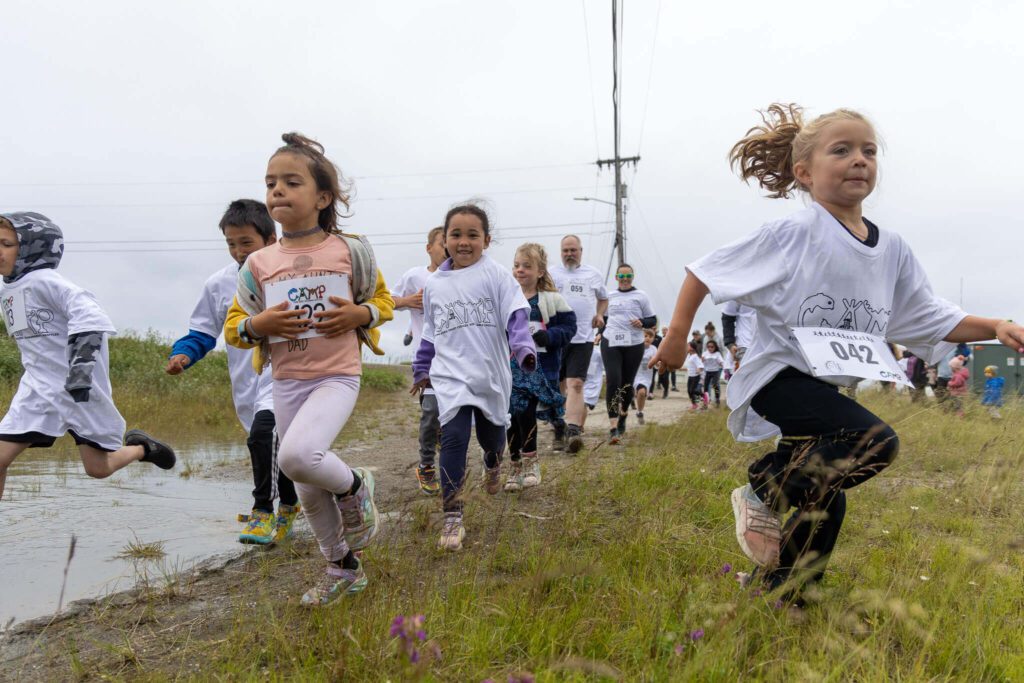Phase one is finished for a project that’s collecting stories from within the Bering Strait region relating to the supernatural. It’s been several years in the making. Kawerak’s social science program director, Julie Raymond-Yakoubian, is leading this curation of local cultural traditions and mythology on the supernatural, which encompasses many topics.
According to Julie Raymond-Yakoubian, more than 150 people representing 17 tribes have participated in this project through focus groups, community meetings, or other gatherings — and their stories share some themes.
“Of course, our region is the home of Yupik, St. Lawrence Yupik, and Inupiaq peoples, and this project is working with communities and tribes from all three cultural groups of people. There are a lot of similarities and themes and stories across and between communities,” explained Raymond-Yakoubian. “One thing that we have heard many stories about is unusual lights in the sky or over the water, lights that are stationary or move, that are different colors.”
In collaboration with a team of three from Kawerak and at least 20 others, Raymond-Yakoubian has visited each community in the Bering Strait region at least once, gathering and curating local knowledge, beliefs, and experiences. She says that concludes the first phase of the project; now, the focus is transcribing and translating stories in preparation for the final publications.
“The main products of this project are several things. One is the archival summary that will summarize all of the information that we found in various archives. Another is probably one or two academic journal articles that will discuss things like the importance of these experiences and phenomena to the indigenous people of the Bering Strait region. And then the main product,” Raymond-Yakoubian said, “which I think most people who know about it are super excited about, is a book manuscript.”
Raymond-Yakoubian expects the book will include archived material along with contemporary stories like this one told by Andrea Irrigoo:
“So, I think it was when I was in second or third grade. I was playing with this wolf fur, and the head was attached, and I was pretending to be a wolf and playing around with it. My mom was like, ‘Hey, if you leave that on, you’re going to become a wolf,’ and I was like ‘Why?’” Irrigoo began. “So, she says, ‘well, a long time ago, back in Stebbins or St. Michael, there were these families that were isolated, a father, a mother, a son, and a daughter. The father would go out hunting every day and never come back with anything.’”
The woman decides to follow her husband to find out why he isn’t bringing anything back from his hunts.
“She followed the husband to the village and saw that he went into a tent. There was another person there, another woman; so, he was cheating on her, and she got enraged,” explained Irrigoo. “She was mad, so she went home and grabbed this bear skin that her grandmother gave to her at her wedding or something, and she told her kids, ‘if anything happens or something goes wrong, put on these,’ I think it was, ‘rabbit and squirrel skins.’”
While wearing the bear skin, the mother runs into town to release some of that anger on her cheating husband, but as she’s returning home, she realizes something is wrong.
“She was halfway to home, and she was about to take off the skin. The skin wasn’t coming off. It was stuck to her, and she was getting scared and panicking, so, she ran home trying to take off the bear skin, and she went into her house, and she couldn’t talk anymore. So she was just roaring.” Irrigoo imitates a bear growl. “And the kids were scared, and they remembered what their mother told them — to put on the skins and run away — so they did that, and the bear is now looking for her children by eating the rabbits and squirrels. Or something like that.”
Irrigoo is Central Yupik from Stebbins. She says her mother used this story as a teaching moment to help Irrigoo learn the value of listening to her mother.
Currently, Kawerak has an Eskimo Heritage program at its offices in Nome where anyone can access digital archives containing similar stories dating back to the 1960s. Raymond-Yakoubian says the final book of collected stories is expected to be published in 2019.







